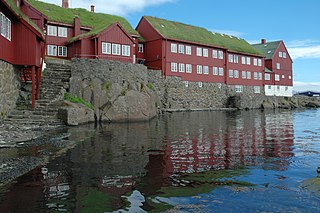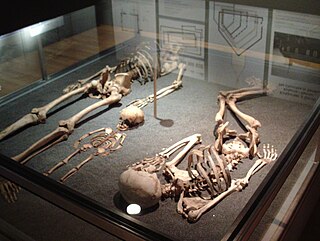The early details of the history of the Faroe Islands are unclear. It is possible that Brendan, an Irish monk, sailed past the islands during his North Atlantic voyage in the 6th century. He saw an 'Island of Sheep' and a 'Paradise of Birds,' which some say could be the Faroes with its dense bird population and sheep. This does suggest however that other sailors had got there before him, to bring the sheep. Norsemen settled the Faroe Islands in the 9th century or 10th century. The islands were officially converted to Christianity around the year 1000, and became a part of the Kingdom of Norway in 1035. Norwegian rule on the islands continued until 1380, when the islands became part of the dual Denmark–Norway kingdom, under king Olaf II of Denmark.
The politics of the Faroe Islands an autonomous country of the Kingdom of Denmark, function within the framework of a parliamentary, representative democratic dependency, whereby the Prime Minister of the Faroe Islands is the head of government, and of a multi-party system. The Faroe Islands are politically associated with the Kingdom of Denmark but have been self-governing since 1948. Executive power is exercised by the government. Legislative power is vested in both the government and the Løgting. The judiciary is independent of the executive and the legislature and the responsibility of Denmark. As of October 25, 2007, the Faroe Islands became one electoral district.
Faroese is a North Germanic language spoken as a first language by about 72,000 Faroe Islanders, around 49,000 of whom reside on the Faroe Islands and 23,000 in other areas, mainly Denmark.

Tórshavn is the capital and largest city of the Faroe Islands. It is in the southern part on the east coast of Streymoy. To the northwest of the city lies the 347-meter-high (1,138 ft) mountain Húsareyn, and to the southwest, the 350-meter-high (1,150 ft) Kirkjubøreyn. They are separated by the Sandá River. The city itself has a population of 19,165 (2019), and the greater urban area has a population of 21,078.

The Løgting is the unicameral parliament of the Faroe Islands, an autonomous territory within the Danish Realm.

Tvøroyri is a village on the north side of the Trongisvágsfjørður on the east coast of Suðuroy island in the Faroe Islands. Together with Froðba, Trongisvágur, Líðin and Øravík it forms Tvøroyri Municipality.

Ólavsøka is the biggest summer festival in the Faroe Islands, and by most Faroese considered as the national holiday of the Faroes along with Flag Day on 25 April. Ólavsøka is celebrated for several days, but the day itself is on July 29. It is the day when the Faroese Parliament (Løgting), opens its session.

Tórshavn Cathedral is the second oldest received church of the Faroe Islands, on Tinganes in the old town of Tórshavn. Painted white, and roofed with slate, it was established in 1788. The cathedral lies in the north of the peninsula of Tinganes and is one of the main attractions of the town. Like most churches of the country it belongs to the Evangelical-Lutheran national church of the Faroe Islands. Since 1990, it has been the seat of the Bishop of the Faroes and is therefore known as a cathedral.

The Catholic Church in the Faroe Islands goes back to the year 999, when king Olav Tryggvason of Norway sent Sigmundur Brestisson on a mission to the islands with several priests. The islands became an independent diocese in 1111, but were officially reformed in 1537 and the last Catholic bishop was executed in 1538. After 1538, the Catholic Church was only revived in 1931 as a part of the bishopric of Copenhagen. The state church is now the Protestant Faroese People's Church.

Gundadalur is the name of an area in Tórshavn, Faroe Islands. It is home to three different football pitches and other sports facilities. The largest one is the national stadium Tórsvøllur, a multi-use stadium.
Svangaskarð, also referred to as Tofta Leikvøllur, is a multi-purpose stadium in Toftir, Faroe Islands with two football fields and a sports arena for athletics around the lower field. It is currently used mostly for football matches. The stadium holds 6,000 people. It was the sole home ground of the Faroe Islands national football team from 1991 and until the Tórsvøllur Stadium was built in the capital Tórshavn in 1999 and is still occasionally used for international football matches.
Norske Løve was a ship with 36 cannons owned and operated by the Danish East India Company.

Listasavn Føroya is an art museum in Tórshavn, Faroe Islands for mostly permanent exhibits of Faroese arts. Tórshavn is the capital of Faroe Islands.

Dr. Jakob Jakobsen was a Faroese linguist and scholar. The first Faroe Islander to earn a doctoral degree, his thesis on the Norn language of Shetland was a major contribution to its historical preservation.

H.N. Jacobsens Bókahandil is the oldest bookshop in the Faroe Islands. It is also one of the oldest shops still in business in the Faroes today.

The Faroe Islands, or simply Faroes, are a North Atlantic archipelago located 320 kilometres (200 mi) north-northwest of Scotland, and about halfway between Norway and Iceland. Like Greenland, it is an autonomous territory within the Kingdom of Denmark. The islands have a total area of about 1,400 square kilometres (540 sq mi) with a population of 52,703 as of September 2020.

Kaj Leo Holm Johannesen is a Faroese politician. He was the prime minister of the Faroe Islands, representing the Faroese Unionist Party (Sambandsflokkurin). He took office, succeeding Jóannes Eidesgaard on 26 September 2008 and left office on 15 September 2015, after his party and coalition with Fólkaflokkurin and Miðflokkurin lost the general election on 1 September 2015. Johannesen is also a former international football player; he was goalkeeper for the Faroe Islands national football team.

Hotel Føroyar is a four-star hotel above the Faroese capital of Tórshavn. Next to the Hotel Hafnia, it is the only four-star hotel in the country as well as its largest hotel with 216 beds.

The National Museum of the Faroe Islands is the national museum of the Faroe Islands, located in Tórshavn.

Annika Olsen and is a Faroese politician, high school teacher and former swimmer. She was Deputy Prime Minister and Minister of Social Affairs in the Faroe Islands (2011–15) and Minister of Internal Affairs from 2008 to 2011 representing the People's Party. Before that she was a member of the City Council of Tórshavn from 2004 to 2008. Annika Olsen has an MA in Nordic languages and literature with a supplementary subject in religion. She is the daughter of Jákup Olsen, a businessman, former politician and former headmaster of Vágur's School and Marna Olsen, born Holm, a retired teacher.
















